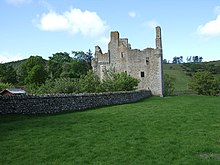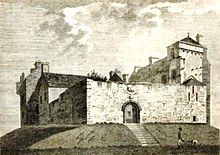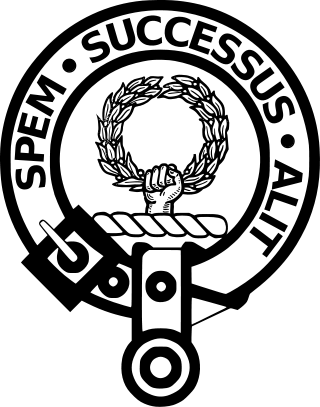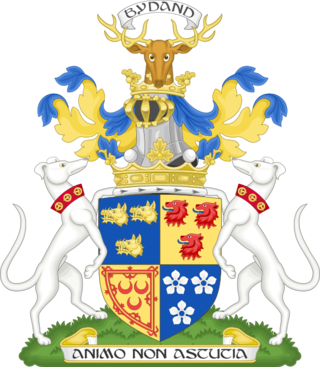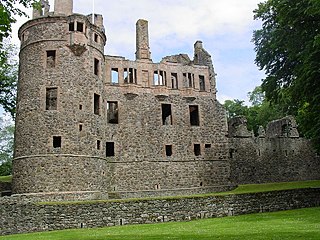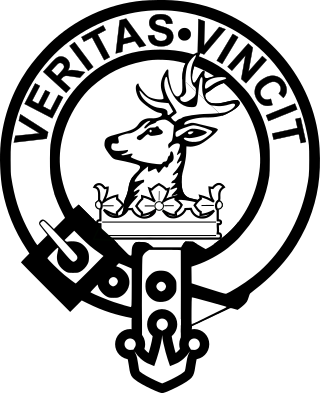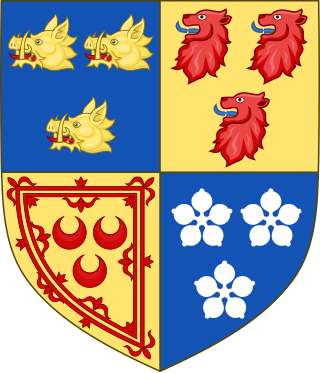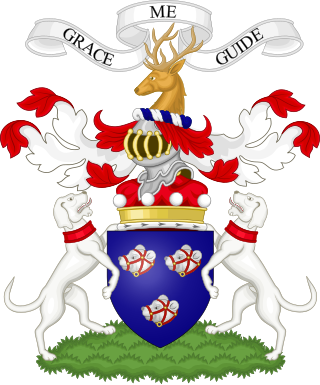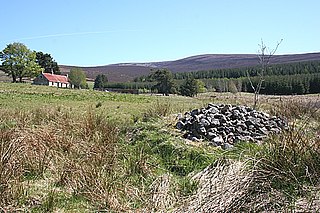| Clan Gordon | |||
|---|---|---|---|
| Gòrdanach (Singular), Na Gòrdanaich (Collective) | |||
 Crest: In a ducal coronet Or, a stag's head and neck affrontée proper, attired with ten tines Gold | |||
| Motto | Bydand ("abiding") [1] Animo non astutia ("By courage, not by craft") [2] | ||
| Slogan | An Gòrdonach | ||
| Profile | |||
| Region | Highland | ||
| District | Aberdeenshire | ||
| Plant badge | Rock ivy | ||
| Pipe music | "The Gordon's March", "Cock o' the North" | ||
| Chief | |||
 | |||
| The Most Hon. Granville Charles Gordon | |||
| The 13th Marquess of Huntly (An Gòrdonach [3] ) | |||
| Seat | Aboyne Castle [4] | ||
| Historic seat | Huntly Castle [5] | ||
| |||
| |||
| |||
| |||
Clan Gordon is a Highland Scottish clan, historically one of the most powerful Scottish clans. The Gordon lands once spanned a large territory across the Highlands. Presently, Gordon is seated at Aboyne Castle, Aberdeenshire. The Chief of the clan is the Earl of Huntly, later the Marquess of Huntly.
Contents
- History
- Origins
- Wars of Scottish Independence
- 15th century and clan conflicts
- 16th century and clan conflicts
- 17th century and Civil War
- 18th century and Jacobite risings
- British Army regiments
- Chief and arms
- Tartans
- Castles
- See also
- Notes and references
During the Wars of Scottish Independence in the 13th century, the Gordons supported William Wallace in the cause of independence. In the 15th century, the chiefship of the clan passed to an heiress, who married into the Seton family and her male descendants assumed the surname Gordon and continued as chiefs of the clan. The Gordons assisted in defeating the rebellion of the Earl of Douglas also in the 15th century. In the 16th century, the Gordons as Catholics feuded with their Protestant neighbors the Clan Forbes and also defeated at the Battle of Glenlivet, the Protestant Earl of Argyll. During the Wars of the Three Kingdoms of the 17th century, the Gordons supported the Royalist cause. During the Jacobite rising of 1715 the Clan Gordon was Jacobite. During the Jacobite rising of 1745, their chief, then the Duke of Gordon, pledged his support to the British-Hanoverian Government, but his clan remained Jacobite.



